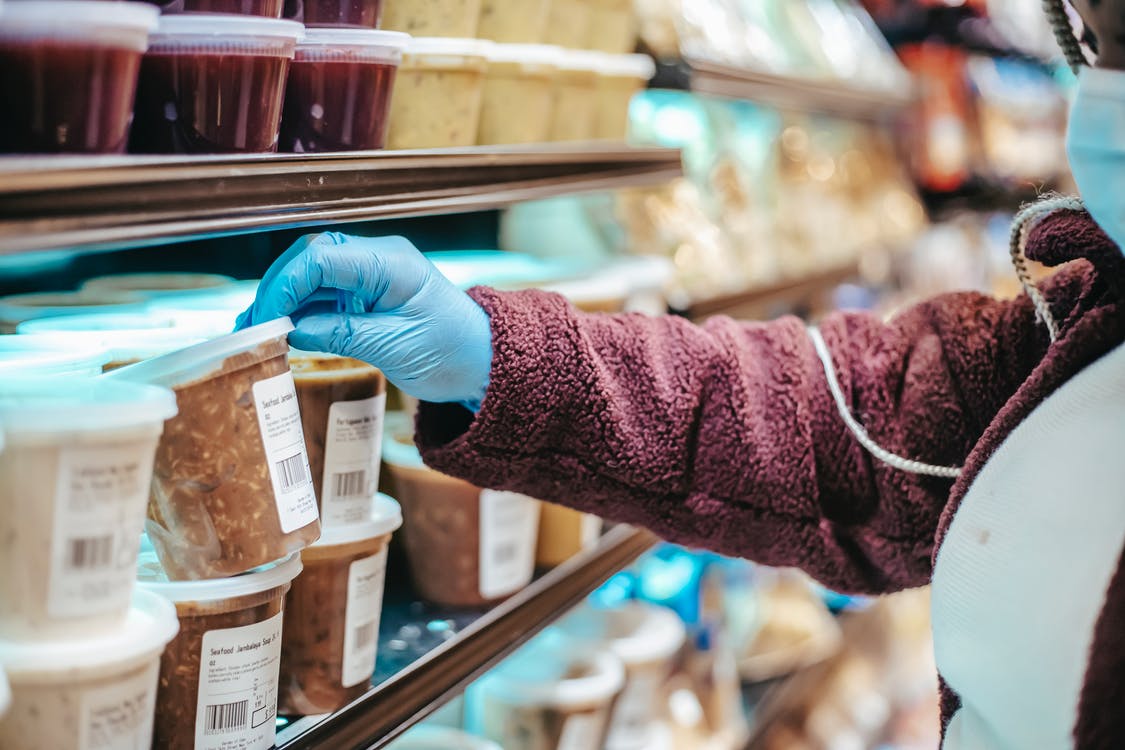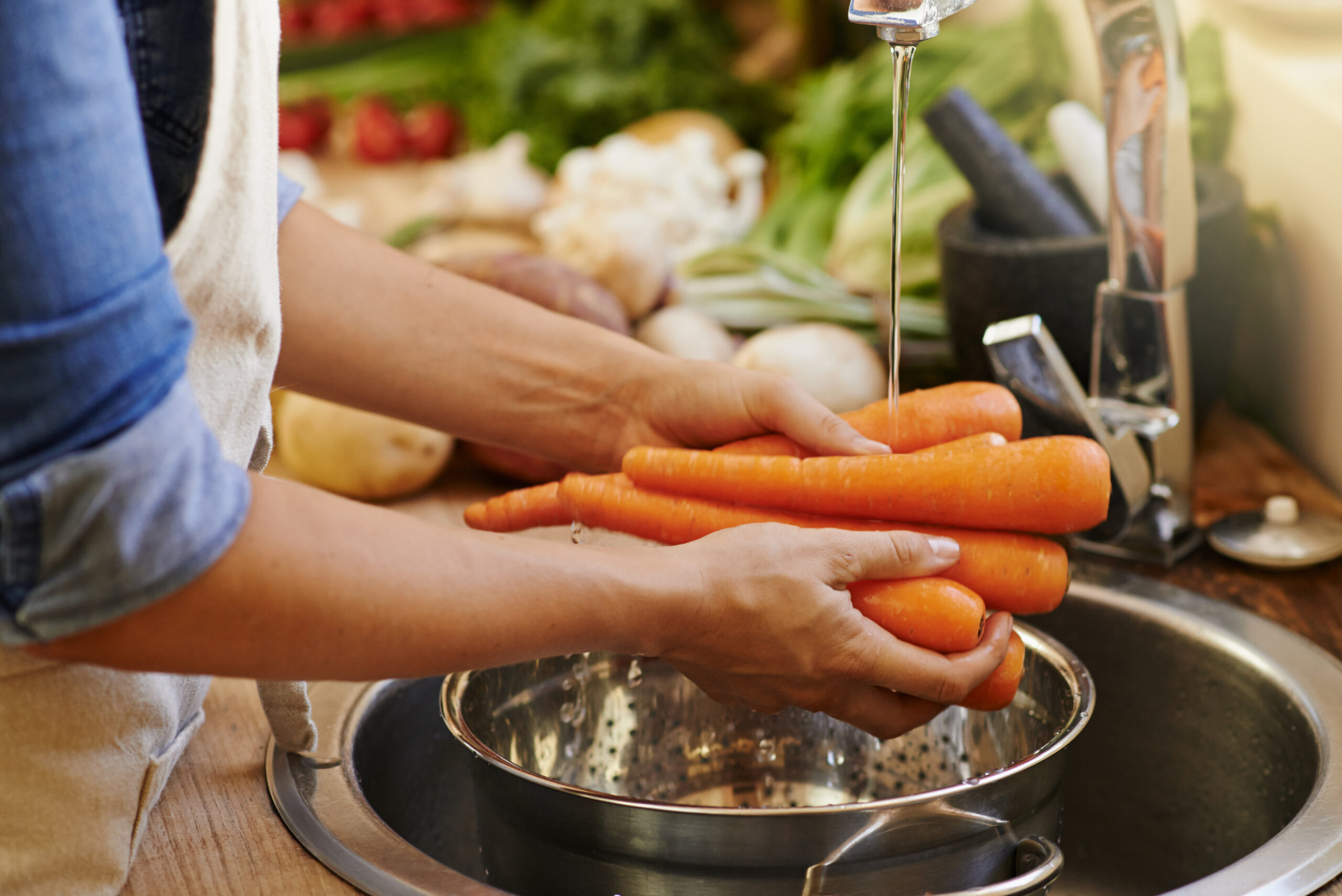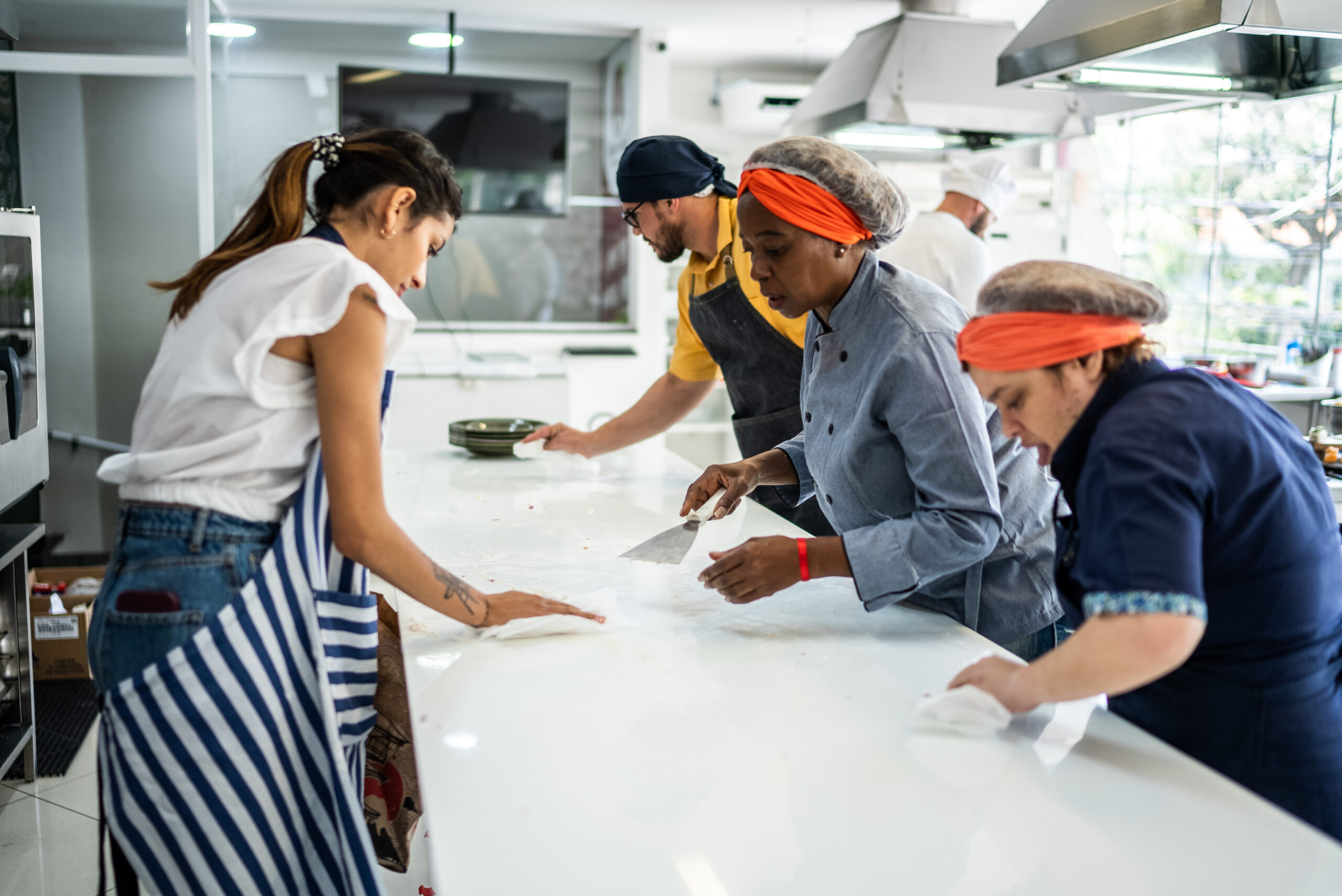While the number of foodborne diseases is increasing worldwide, Singapore, according to Singapore Food Agency (SFA), has been one of the countries with the lowest incidents of foodborne disease outbreaks, despite the fact that 90% of the food consumed is imported.
How did Singapore manage to achieve this? To put it simply, Singapore is pretty focused on observing stringent food safety standards and guidelines. SFA also plays a vital role in making this happen by creating an effective integrated food safety system.
However, the assurance of food safety is a shared responsibility. In order to uphold this reputation, each and every food business in Singapore must follow the food safety guidelines, which we shall cover in this article.
Personal hygiene
Proper personal hygiene may prevent any kind of foodborne hazard. And personal hygiene means keeping yourself clean, whether you’re a cook, waiter, consumer, or any kind of food handler.
By keeping a high level of personal hygiene, you’re sending a message that the food you’re making is hygiene as well. For instance, would you be assured getting food from someone with a bad body odour, or dirty fingernails? These will not do well as the first impression towards your customers.
Aside from that, being “clean” is not just about looks. You must also be “sanitised”, which means you need to clean yourself from germs and bacteria.
Here are some personal hygiene tips for food handlers:
- Wash and dry your hands thoroughly and frequently before and after handling food.
- Wash your hands with soap and warm water for at least 30 seconds each wash to optimise killing the bacteria.
- Dry your hands with a clean dry cloth, preferably disposable paper towels.
- Never smoke, spit, or even eat in a food handling or food storage area.
- Keep your spare clothes and other personal belongings away from where food is stored and prepared.
- Keep fingernails short so they are easy to clean and don’t wear nail polish because it can chip into the food.
- Tie back or cover long hair.
- Change disposable gloves regularly.
Aside from these tips, food handlers must also pay attention to their own health. Employers and employees need to ensure that no illness or disease is passed on to the customers through food. If an employee is not feeling well, they should not go to work until their symptoms have stopped for at least 48 hours.
Food handling
Handling food is a wide topic of discussion. In this part, we’re going to specifically discuss the most common, which include the use of chopping boards, gloves, and freezing and thawing foods.
Chopping boards
- You should always use separate chopping boards for preparing raw and cooked food.
- Clean chopping boards regularly to remove grease and dirt.
- Replace chopping boards when they are excessively worn out.
Gloves
- Wear gloves before handling ready-to-eat foods.
- Don’t use gloves for preparing food for other tasks.
- Change and throw away old gloves that are dirty or torn.
Storing and freezing food
- Always do a regular deep clean of your refrigerator and freezer.
- Store cooked food above raw food.
- Store all food in proper food-grade closed containers.
- Conduct a weekly stock check to discard food that has turned bad or expired.
Thawing food.
When thawing food, you should not leave it at room temperature, since this might lead to bacteria growth. There are three methods you can use in thawing food:
- Let the food thaw in the refrigerator.
- Thaw using a microwave oven.
- Thaw under running water or cold water.
Clean premises
Food premises need to be kept in a clean and sanitary condition in order to prevent the spread of disease, reduce the possibility of food poisoning, and maintain a safe and clean working environment. These can be done by cleaning effectively and preventing pest infestation.
A clean premise demonstrates that you are serious about producing high-quality safe food. Customers are more likely to return to clean and well-maintained premises.
Here are some tips to keep your premises clean effectively and efficiently:
- Keep your floors, walls, and ceilings free from visible grease and dirt.
- Store all items off the floor to allow plenty of room for cleaning beneath shelves and equipment.
- Conduct regular maintenance, e.g. filling holes and replacing damaged tiles.
- Minimise stock holdings and throw away things you don’t use.
- Implement and display a cleaning schedule.
- Keep wood out of the kitchen, since wood can absorb moisture which provides a perfect breeding ground for bacteria, and cannot be easily cleaned nor dried.
Next, let’s talk about pests, specifically rats and mice. Rats and mice can transmit diseases such as plagues, leptospirosis, hantavirus, and murine typhus. They can also damage property by gnawing and contaminating food. Here are some preventative measures you can take:
- Deny entry by checking and sealing potential entry points using wire mesh or metal guards.
- Seal any holes, crevices, and openings in the ceilings, walls, ground, or floors.
- Store food in proper containers, preferably made from glass or metal.
- Do not leave waste overnight.
- Dispose of any empty carton boxes, unusable pallets, newspapers, and other unwanted items.
Restaurant inspections
A restaurant inspection is essentially a check conducted by the Singapore Food Agency (SFA) to ensure that your restaurant meets the necessary hygiene requirements to safely prepare and serve food to customers.
During an inspection, hygiene officers check for a wide range of food safety issues, such as:
- Personal hygiene: whether food handlers are fit for work and wash their hands thoroughly and frequently.
- Food storage: whether food storage areas are clean and free of pests and all food packaging is properly labelled with the food contents and expiry dates.
- Cold storage: whether food is stored at the proper temperatures in freezers and refrigerators, and cooked products are stored separately from raw products.
- Food preparation: whether food is cooked thoroughly to the required core temperature, and all ingredients used are clean and washed thoroughly before cooking.
- Toilets: whether toilets are clean, dry and well-ventilated.
After the inspection, you will be given a grade according to how well your restaurant met food hygiene and safety standards. If you would like to ace your restaurant inspection, it is paramount that you comply with food safety and hygiene regulations.
Handling and washing vegetables
Sometimes, raw fruits and vegetables contain harmful germs that can make you and your family sick, such as Salmonella, E. coli, and Listeria. You can enjoy uncooked fruits and vegetables by taking the following steps to reduce your risk of foodborne illness:
- When shopping, choose products that aren’t bruised or damaged.
- If you choose to buy pre-cut fruits or vegetables, pick items that are refrigerated or kept on ice.
- At home, always wash your hands and your kitchen utensils before and after handling the fruits and vegetables.
- Clean those fruits and vegetables before eating, cutting, or cooking under running water—even if you do not plan to eat the peel.
- Store fruits and vegetables separately from raw foods, especially meat, poultry, and seafood.
Good food hygiene
Practising good food hygiene is as simple as keeping the germs away and staying safe in the kitchen. In this section, we’re going to discuss how to properly handle different types of food, such as meats, seafood, dairy products, and cooked foods.
Meats
- Separate raw meat from cooked or ready-to-eat food to prevent cross-contamination.
- When handling meat, use separate cutting boards and utensils for raw meat and cooked food.
- After cutting raw meat, wash the cutting boards and utensils thoroughly with dishwashing detergent and running water.
- Chilled and thawed meat should be placed in the refrigerator if not cooked immediately.
- Do not refreeze meat that has been thawed.
Seafood
- Handle seafood with care. Bruises and punctures in seafood make them spoil more rapidly.
- Thaw seafood safely in the refrigerator or use the microwave oven.
- Scrub and clean the shells of scallops, mussels, clams or oysters under cold water before opening or cooking them in the shell.
- Always cook seafood thoroughly until it is opaque and flaky.
- Cook seafood well to kill viruses and bacteria.
Dairy products
- Do not buy dairy products that are not properly sealed.
- Avoid canned dairy products that are dented, rusty, leaking or swollen.
- Check the expiry date on dairy products and do not buy items that are past their expiry date.
- Take out only what you need to consume and return the unused portion to the refrigerator or freezer immediately.
- Do not leave dairy products at room temperature.
Cooked foods
- Cook only sufficient amounts for immediate serving.
- Portion out excess cooked food after cooking and refrigerate quickly.
- Cooked food intended for consumption later should be separated from food to be served as soon as it is cooked.
- Do not try to chill or cool down hot food in large quantities. This is because large quantities of food would take a longer time to chill properly.
Good hygiene practices for bakeries and cake shops
Products used by bakeries and cake shops often use ingredients that pose a higher risk of food poisoning when not handled properly. Moreover, the preparation of baked products often involves extensive handling. Hence, it is vital that food handlers at these establishments ensure bread and confectionery products served to consumers are safe for consumption.
For this section, we’re going to explain the guidelines in five levels, which are purchasing ingredients, storing ingredients, preparation, slicing and packing, and displaying.
Purchasing ingredients
- Purchase only from reliable suppliers approved by the SFA
- Always check for expiration dates.
- Ensure the packaging is intact and transported at an appropriate temperature.
Storing ingredients
- Store ingredients at appropriate temperatures and monitor them daily.
- Store raw ingredients in a separate chiller from ready-to-eat ingredients as far as possible.
- Always store ready-to-eat ingredients in covered containers above raw ingredients.
Preparation
- Do not keep cooked/ready-to-eat food at room temperature for more than 4 hours.
- If you are breaking eggs for future use (also known as ‘pooling’), pool only the number of eggs you require.
- Use all ‘pooled’ liquid eggs on the same day and do not top up with new eggs.
- Prepare only what is required in small batches. Estimate the demand to avoid over-production and prolonged storage.
Slicing/packing
- Cool baked products on clean racks and trays.
- Cover baked products during cooling.
- Clear crumbles that are left after slicing the products.
- Use clean packaging to pack the products.
Displaying
- Ensure that products are stored in clean display cases which are covered at all times.
- Ensure products are displayed at appropriate temperatures.
- Do not display products with perishable fillings beyond 4 hours at room temperature.
- Adopt a first-in-first-serve approach in the display of products for sale.
- Time stamp the products to inform consumers of the “consume-by” date.
Ideally, you should also hire food handlers with proper education in patisserie and baking, which ensures the quality of your products above all else.
Selecting food carefully
Food safety begins when you’re shopping for food. As consumers, you can also play an active role in protecting yourself against food poisoning.
Once you purchase the food, you can practise safe food handling to prevent bacteria in foods from growing or multiplying, and to ensure that food does not become contaminated. Here are some useful tips for selecting food optimised for safety:
- Buy your food from established and reliable retail establishments.
- Select food that has not passed its expiry date, as shown on the packaging.
- Do not choose canned food that is badly dented or bloated.
- Avoid food packaging that is torn, leaking or infested with insects.
- Do not buy food that has turned mouldy or rancid.
- Check that bottled milk or drinks are tightly sealed.
Storing food at safe temperatures
You are advised to store your food products in your refrigerators and freezers at safe temperature ranges. The temperature of the refrigerators should be maintained at 4°C or below, while the freezers should be maintained at -18°C or below.
This is because of the temperature danger zones, where foodborne bacteria multiply rapidly. It is between 5°C or 41°F and 60°C or 140°F. When food stays for more than four hours in this danger zone, it is most likely that the bacteria have multiplied to a dangerous level, and the food should be discarded.
Safe use of plastic food packaging
Most food manufacturers tend to use plastics for food packaging and containers. While plastic containers such as cups, plates, bowls and bottles offer a range of lightweight and unbreakable kitchenware for your daily household use, certain chemicals that are used in the manufacture of plastic packaging or containers can migrate into foods during use
Usually, manufacturers take into consideration the type of food and its contact time with the packaging, and the amount of heat to which the plastic will be subjected. However, it would be safer if you follow these guidelines for the safe use of plastic food packaging and containers:
- Reheat pre-cooked foods in a conventional oven only if they are sold in specially made “ovenable” packaging and oven reheating instructions are given by the manufacturer.
- Cold or freezer storage containers such as yoghurt, margarine and ice-cream tubs are not manufactured for reheating or cooking food in a microwave or conventional oven.
- Always follow the manufacturer’s instructions on the proper usage of plastic packaging/containers.
- Plastic packaging that is used for commercial packing of food and takeaway plastic food containers used in eating outlets are disposable items designed for single use and are not intended for repeated storage of food.
Conclusion
With the detailed guidelines of food safety, people who handle food are required to have the appropriate skills and knowledge for the work they do. Therefore, everyone working on food premises is encouraged to be trained in safe food handling.
Ideally, you should have your staff certified by taking an SFA-approved food safety course. At Skillmaster Training Centre, we offer you a food handler course that has been designed specifically to equip food handlers with the proper knowledge that is in line with the Singapore Food Safety guidelines.




